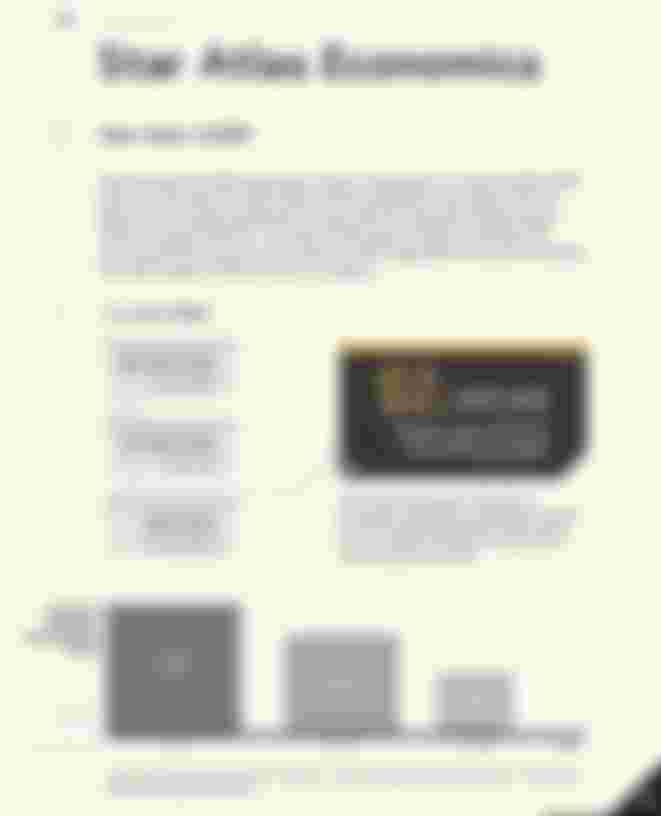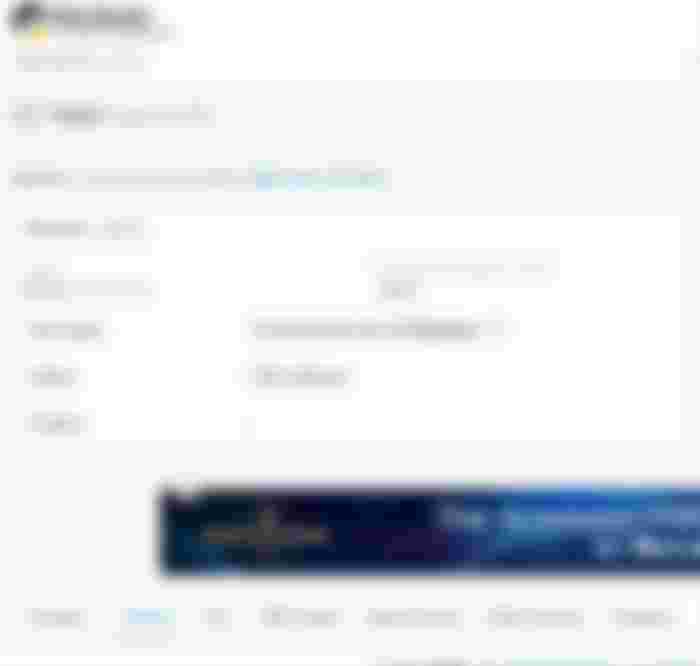It is not easy to know how to identify a scam in an NFT game. In this guide to identify SCAMS in NFT games I will give you the 10 essential keys to evaluate the quality of a project.
How to detect NFT scam games is becoming an increasingly complicated challenge. As we have seen recently with cases like the failed launch of Block Monsters, knowing how to detect scams in new NFT games is a skill that requires more and more hours of research. I have prepared this 10-step guide that will help you learn how to identify fraudulent blockchain NFT projects.
1. The website of an NFT game: a good way to detect NFT scam games.
The project's website is its letter of introduction. It is a fundamental element, since it is the first formal impression we receive of a project. Its design must be clear, clean, coherent and detailed. At a first glance, we should be able to quickly answer fundamental questions such as: what type of product are we investing in? Is it an NFT game or a token? What are its main features and differentiating elements?
It is very important to be able to find basic information such as social networks, human team, whitepaper, official contract and a development calendar or roadmap indicating the different stages of the game process. All this must have a design line according to the style of the project. There must be coherence in the visual style of all the elements of the project.
Be wary of NFT games that do not present this type of information in a way that is accessible to an investor of any level, or those that have a website created in a generic way or following a template. This denotes little effort for the care in the design.
In order to learn whether an NFT game is a scam we should gauge the enthusiasm of the project when asking website visitors to buy their token. Another red flag should go up if the site puts too much emphasis on instructions for buying the game token and little information about the nature of the project is available.
2. Whitepaper: is it detailed and professional?
While the website is the letter of introduction, the whitepaper is the project's identity document. Its founding charter. It should specify relevant information for all types of investors: from the fundamental idea, the "story", modes, or functionalities of the game... to the economic aspect or tokenomics of the game token: internal economy systems, budget distribution, marketing actions, specifications and functions of the token and the NFTs, or short, medium and long term plans, among others.
Like the web page, the whitepaper is another very important first impression of the project on potential users or investors, so this document should have well elaborated stylistic aspects. It is not necessary for each page to be personalized, but it is advisable to include visual elements to make it easier to read, such as distribution charts, calendars of dates or highlights of important information.
The quality of the writing is another critical factor: a whitepaper with spelling mistakes or text paragraphs "empty" of content shows an intolerable lack of professionalism. If you want to see an example of a good whitepaper, take a look at Star Atlas' whitepaper through this link. If you want to see a pitiful one, Cryptocars World.

3. Transparency: Is it known who forms the development team?
Who are the creators of the project and who supports them? This is a fundamental question to answer when it comes to detecting NFT scam games. In case the team is confident in their own work, they should have no problem in making their identity public. Having references to previous work or their social media contacts (Twitter and/or LinkedIn) to communicate with them gives extra credibility to the NFT game in question. In Mist NFT, for example, we don't know who the developers are. In Thetan Arena, we do.
Regarding collaborators, their existence is not a fundamental requirement, because it may be a young project or one with little initial investment. However, the existence of collaborators can give us a better idea of the size and reliability of the project. There is a categorical difference between a project supported by large investment companies and one without support or aid. At the end of the day, we all want to know better the people in whom we place our money and trust.
4. Official NFT Gaming Contract: the gateway to scams
The official project contract is the indispensable gateway to invest in the native token of an NFT game. It is usually located in the whitepaper, website or social media profile. It always comes in the form of an alphanumeric code such as:0xbcabc6a41da425f412fc3cbd2q34z32dcf7fe0e4. Through this code, we can access the programming script of the token and the transactions that have been made on the main wallet of the token, among other data of interest.
Since we are going to connect this contract to our wallet, it is of vital importance that we make sure that we are signing the official contract of the project. Under no circumstances should we go to sources other than the official ones to copy the address of the contract. A very common scam is to meet falsely friendly users who, either on Telegram or Discord, provide us with fake contract addresses that only aim to empty our wallet.
5. Number of holders and percentage of participation
To see how many people hold the token for a game, check the game's BSC Scan page. The number of holders is less and less relevant for detecting NFT scam games. We will see linked wallets with a large percentage of tokens reserved for game managers. The total number of holders is a number to consider as it will tell us how many participants are involved in the investment. But this number should not be separated from the percentage of participation of each of these investors.

That said, it should be noted that anyone with a minimum of knowledge can create as many portfolios as they wish in a matter of minutes. In fact, in recent months this has become common practice. The only thing to do in this regard is to look at the larger movements of money; if we see similar transfers that are repeated (for example, several sales of the same amount of tokens spaced out over time) it is likely that these transfers are being made either by whales or, in the worst case scenario, by the game managers themselves.
6. Market Cap or market capitalization: how much money is tied up in the project?
It is important to see how the market cap has evolved from the launch of the token to its current state: has it gone up or down? Has it grown steadily? Have there been abrupt movements? The capitalization of the game also indicates the impact that our participation in the project will have if we decide to buy tokens: the lower the market cap, the greater the impact our investment will have on the price of the token, and vice versa.
7. External factors in NFT game development and marketing
Once these elements have been identified, it will be time to carry out a study on the events carried out in the project and its economy. This must be information that we know how to interpret in order to be able to be sure of a possible swindle.
Did the NFT game have a pre-sale launch of its tokens?
What is the percentage of large investors among the holders?
Are there possible future triggers that could stimulate price action (listing on exchanges such as Binance or Kukoin, listing on CoinmarketCap or CoinGecko, Steam game launch, possible release of a second token, etc.)?
It is of vital importance that we make an exhaustive analysis of the economic issue of the project. This research will entail a greater effort and technical knowledge of the investment world. Example: we may see a project with millions of investors, but with a tiny participation because in the exit operations the investor has left a small remainder due to the lack of liquidity in the exchange, or observe systematic capital outflows in large capital portfolios due to the loss of confidence in the project.
8. What can we do with the token and NFT?
Once we have acquired a share of the investment either in the form of tokens or NFTs, we need to know how we can manage them (sell them, buy them and store them). The ability to participate in tests to make our NFTs more valuable, get more tokens, exchange them for other assets... in short: possibilities and consequences of managing in the project environment with our investment.
Let's ask reasonable but necessary questions: is there a marketplace to sell NFTs, how much time will I have to spend on the game to make a profit, how much are NFTs currently selling for, has their price gone down or up?
9. Does the NFT team keep its word?
It often happens that many teams promise certain aspects in terms of functionality that are not delivered or do not proceed with the correct use of these. Clear examples are the common appearances of new tokens with the project in an advanced stage of development or the changes and limitations of the project against the promises of its output.
On many occasions we find that features are banned, limited or restricted because of the team's lack of prognosis for the future of the project (in the most benevolent of cases), which severely damages their confidence and thus negatively impacts the economics. Example: Mist NFT stated in its whitepaper that the native and homonymous token would be the only token needed to buy NFTs. However, the player discovered by surprise on the day of the marketplace launch that the cryptocurrency to be used to purchase items would be BNB.
10. Presence and communication of the NFT project in social networks.
Under the heading of communication and public relations we include all aspects related to the information that the development team provides to its investors and stakeholders through the different existing channels. Integral and healthy communication is fundamental.
Website: must include links to social networks, news on the progress of the development of the game and/or link to a site that hosts them.
Telegram: widely chosen as a model for managing communities of different languages. It is important to check that the number of ACTIVE participants is realistic; if it is too high, it is better to flee, as happened with Pocoland and its 180,000 users on Telegram shortly after the project was born). Another key aspect to evaluate is the moderation capacity of the Telegram group administrators. We must avoid projects where there is a gibberish of information or memes or a complete silence caused by the abuse of power.
Youtube: official communications in the form of videos launched on the game's channel are a good indicator of the state of development. We can also extract information through the official collaborators of the project, always bearing in mind that they are still salaried members of the team. More youtubers than you might think publish videos paid by game developers.
Discord: another medium similar to Telegram but with greater capabilities. It is often used as a news repository, announcement channel, discussion and opinion forums, and even for live Q&A sessions with the development team.
Detecting NFT scam games always depends on you
I strongly urge you to take the steps outlined here before entering into any investment project in order to identify potential frauds or diamonds in the rough. "This IS financial advice.
and so much for today's article I hope you liked this little guide that I developed to avoid being a victim of fraud in NFT games of dubious origin so as not to put your assets at risk when investing in a new project that is promising.time may as well decide it
pandoru1997 says goodbye until the next article.




Regarding point 4: I'm glad you pointed the Discord thing, but I don't think people who read it will understand how severely the issue is deeped. These "friendly" scammers will try to "help" you on the game's official Discord/Telegram, and by the time they're found out, many innocents would've lost their money... This is sad.
As for point 9... Sometimes things can't be helped. I rather put trust in the team if something like this happened but in a smart way. If it's "Never invest more than you're willing to lose" usually, then it's "This is a test of trust and not investment" in cases like that. ...Thanks for making me think of the situation.
The last point hit me hard because I've been part of a team (not crypto-based) that doesn't communicate too much through their social media page. I feel guilty about this now, but I'm learning.